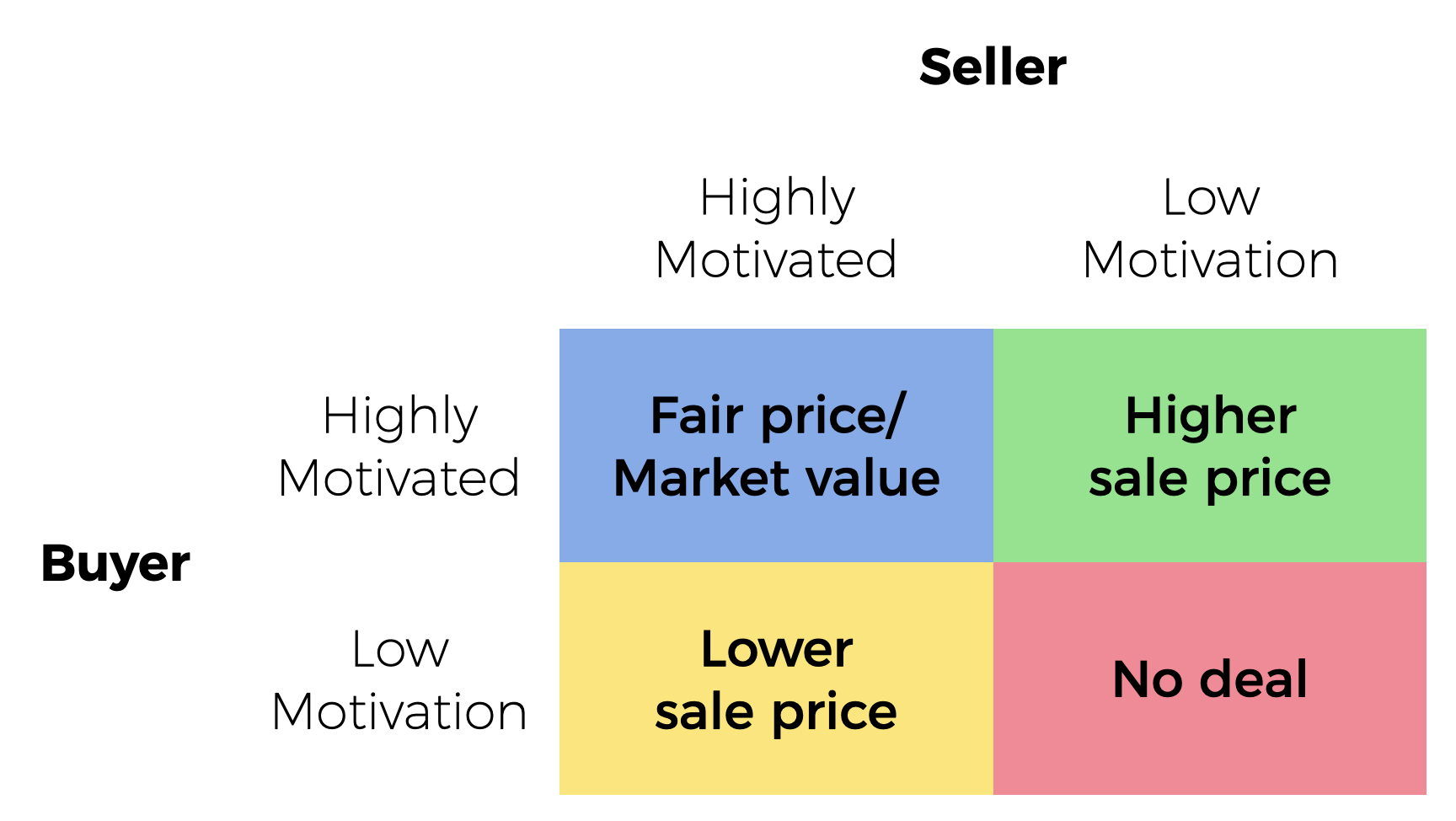
In a balanced market like our current one, you run into some different situations that cause individual sold prices to fluctuate.
In some cases we might find that a smaller, inferior home will sell for MORE than a larger home with a better lot or fancier upgrades.
It really makes no sense using logic… so obviously there has to be a good reason why this happens.
Under these more balanced conditions, a seller might ask us what their home is worth, or a buyer might ask us what a home is worth… and we usually say, “It depends”.
“If you look at these four recent sales, the home is probably worth $950,000. But these other three sales justify a price of $1 million.”
So what’s the right price to offer or accept in this situation?
It depends a lot on the motivation of both sides.
Introducing… the Motivation Matrix ™!
We made a graphic to explain it.

When the buyer and seller are highly motivated, they will likely land at a fair price for the home. In the example above, it might be around the $970k to $980k range.
But if the seller needs to sell and the buyer is prepared to wait it out… that’s when the good deals happen. The buyer might get it for $950k.
The opposite happens when a buyer is ready to go, but a seller doesn’t NEED to sell. They’ll usually hold on for a better price. The buyer might have to offer closer to $1 million to get it.
If both sides don’t show any real motivation… it’s pretty tough to make a deal happen.
… and that’s why sale prices vary so much in a balanced market.
As each new sale is reported, we find even more variation occurs, and generally prices stay mostly flat in these balanced conditions. But when the market swings in favour of buyers or sellers, the dynamic changes due to supply and demand imbalances.